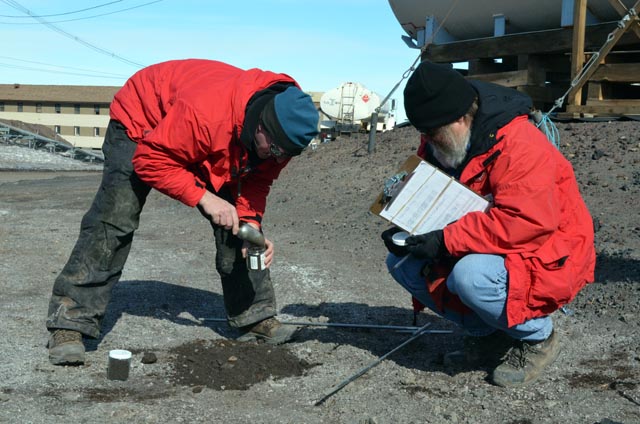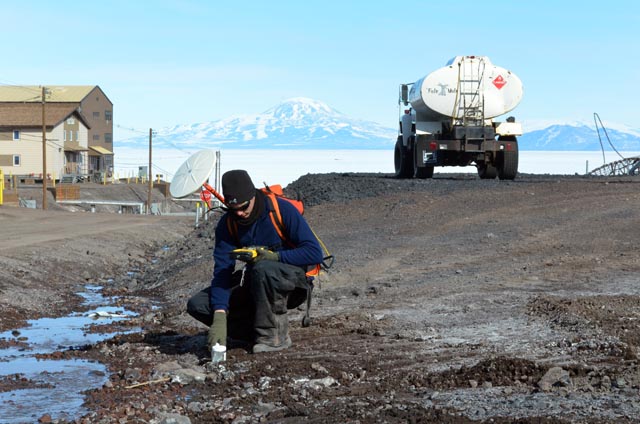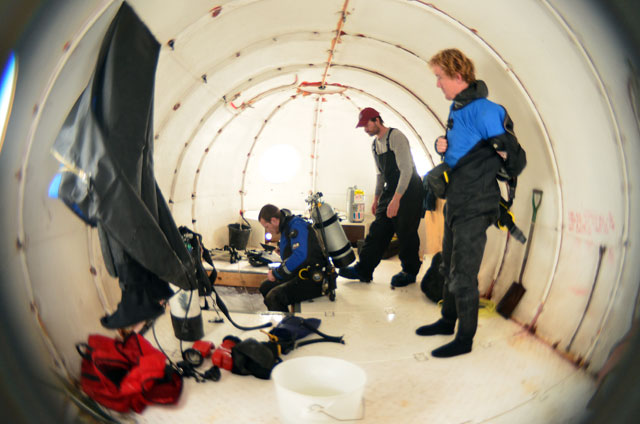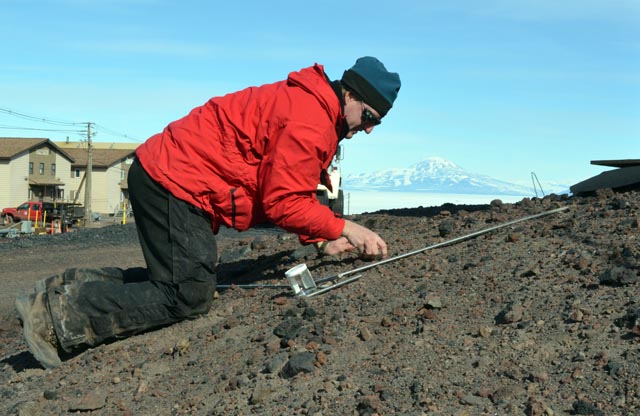Containing contaminationMcMurdo environmental monitoring project finds small signs of recoveryPosted May 10, 2013
Time is ever so slowly eating away at the bad habits of the past. A decade-long environmental monitoring program at McMurdo Station “The terrestrial environment is really fairly clean,” noted Andrew Klein Klein and his small team, which includes collaborators from Texas A&M University-Corpus Christi The latest report card is looking pretty good, especially for the nearby marine environment that was polluted during the early decades of the USAP after the U.S. Navy An area known as Winter Quarters Bay is particularly polluted. The small cove has been used as a harbor since the turn of the 20th century during the Heroic Age of Antarctic Exploration when Robert Falcon Scott’s first expedition wintered there for two years. The Navy later used it as a convenient trash dump. An ROV survey conducted by Rikk Kviteck of California State University-Monterey Bay Such practices are a thing of the past. Serious clean-up efforts began in the early 1990s. The 1991 Protocol on Environmental Protection to the Antarctic Treaty “Like any monitoring program, our goal is to see if any changes are going on,” noted Terry Palmer Palmer is part of the marine component of the monitoring program, donning a dry suit and diving into the frigid, toxic environment where he collects marine sediments and even some marine organisms to see if the pollutants are working their way up the food web. The bay contains a wicked cocktail of contaminants, including polychlorinated biphenyl (PCB), petroleum, combustion hydrocarbons and trace metals. Divers like Palmer collect samples along at three depths along transects in Winter Quarters Bay, as well as at the former waste disposal outfall and at control sites. Recent analyses show that while pollutants like PCBs and even DDT remain elevated, there are some improvements, according to Palmer. “It’s really nice to see we’ve had some decreases over time at some of the sites,” he said during a presentation last year in Portland at a meeting of the Scientific Committee on Antarctic Research Back on land, where Klein and his colleagues spend several weeks each austral summer filling small vials with volcanic soil that makes up Ross Island, contamination levels have held steady, despite the heavy industrial nature of McMurdo Station. The Texas A&M team has collected more than 2,500 surface soil samples since 1999. The cold temperatures and the persistent nature of pollutants like PCB ensure they will linger for decades, according to Steve Sweet “It’s all legacy stuff,” he said of the soil contaminants, which also include heavy metals like lead and mercury, though the levels aren’t necessarily any greater than those found in towns in the United States. Klein said the contamination is confined to places such as roads, helicopter pads and old fuel tanks. “It’s not very extensive spatially,” he said. “It’s where you would expect it to happen, and it’s where we’re still doing stuff actively at McMurdo.” Today, extensive measures are taken to ensure no additional contaminants make it into the McMurdo area environment. All waste is shipped off the continent each year. Containment berms are built around fuel tanks. In the unlikely event of a fuel spill, counter measures are swift. Contaminated soil is collected and placed in a high-heat “soil cooker” to remove the hydrocarbons. “The spill levels are much, much less than they were in the past – and they’re remediated immediately,” Klein said. “It does make a difference.” Mahlon C. Kennicutt II |

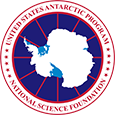

For USAP Participants |
For The Public |
For Researchers and EducatorsContact UsU.S. National Science FoundationOffice of Polar Programs Geosciences Directorate 2415 Eisenhower Avenue, Suite W7100 Alexandria, VA 22314 Sign up for the NSF Office of Polar Programs newsletter and events. Feedback Form |

